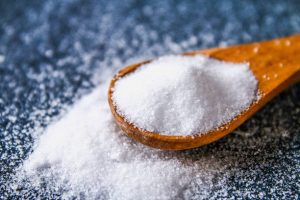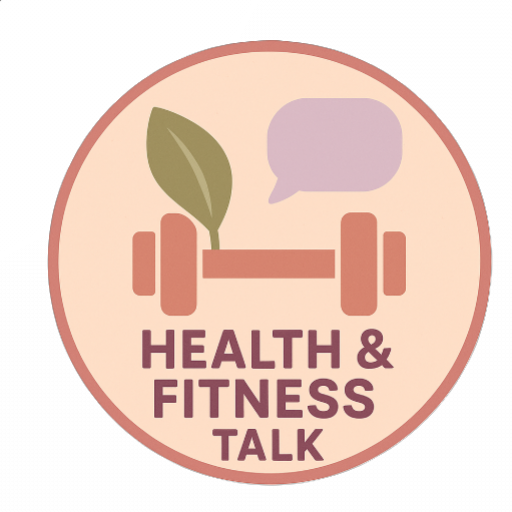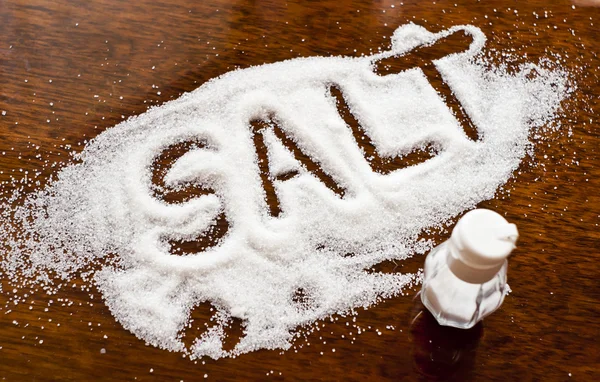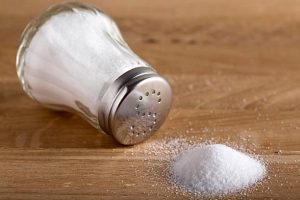Moderation is the key for this. For decades we have been grilled that salt is bad for the body and many people at risk of heart disease have been advised by doctors that salt can do more harm than good. they way I look at it is that that advice is actually putting those with heart disease in even graver danger. Salt has been publicized by the media as being responsible for ruining our health but new research has revealed that too little salt may be dangerous for your health as well.
Look guys the human body needs salt, period. Even better, of course, would be a recommendation to choose a natural salt like sea salt instead of highly refined commercial salt, which often contains harmful additives and lacks a balanced mineral profile and will take your body to the grave earlier than you planned. A new study found that low-salt diets might increase fatal heart attack and stroke risk. Plus, the less salt consumed, the greater the risk.
Researchers also found the link between high salt diets and high blood pressure isn’t as strong as once thought.
salt is an essential nutrient that is required for life that the body cannot produce it itself and which is required for good health. For humans, salt is as essential as water and we can perish from too little salt as we can of thirst. A healthy human body contains about eight ounces of salt and it is regulated in our bodies by our kidneys and by perspiration.
One essential component of salt which is sodium, is involved in muscle contractions including heartbeat, nerve impulses, and the digestion of body-building protein. Sodium is very easily absorbed and is highly active in the absorption of other nutrients in the small intestine. This sodium is the major extracellular electrolyte responsible for regulating water balance, pH, and osmotic pressure. It is very important in nerve conductions. Because of sodium’s importance to your body, several interacting mechanisms, including the generation of hormones angiotensin and aldosterone, adjust the system in the event of consumption of insufficient amounts of salt which would highly threaten the body’s nerves and muscles and interference with the sodium-potassium “pump” which adjusts intra- and extra-cellular pressures and if your salt intake varies widely, these mechanisms activate to assure that your body remains healthy, maintaining a constant blood pressure.
Salt, Smarts, and Sweet Spot: Why Sodium Helps—In Moderation
Salt has been celebrated, taxed, traded, and vilified. Strip away the drama and you find a simple truth: sodium (the active half of table salt, sodium chloride) is essential for life. It conducts nerve impulses, coordinates muscle contractions, regulates fluid balance, and helps maintain blood pressure. The trick isn’t avoiding salt altogether; it’s finding the sweet spot—enough for physiology and performance, not so much that long-term cardiovascular risk creeps up. Here’s a practical, science-grounded guide to why salt is good for you in moderation and how to hit your personal target.
What sodium actually does
Sodium is the body’s chief extracellular electrolyte. Along with potassium, it creates the electrochemical gradients that let nerve cells fire and muscles contract. It also pulls water with it; when sodium moves, fluid balance follows. That’s why a pinch of salt can revive a flat soup—and why very low sodium can leave you fatigued, headachy, or cramp-prone, especially in hot conditions or during long training sessions.
Your kidneys, hormones (renin–angiotensin–aldosterone), and blood vessels continuously fine-tune sodium and water. When intake drops too low for your individual needs, you may notice lightheadedness, reduced exercise performance, or, in extreme cases, hyponatremia (dangerously low blood sodium), most often seen when large volumes of low-sodium fluids are consumed during endurance events.
The “moderation” numbers
Guidelines aim for population health. Most adults are advised to keep sodium under 2,300 mg/day (≈1 teaspoon of salt), the Chronic Disease Risk Reduction (CDRR) level recognized by the National Academies. Many organizations suggest even tighter targets for people with hypertension or salt sensitivity. At the same time, virtually no reputable body recommends zero sodium; we require it daily.
So what counts as “moderate”? For most generally healthy adults: 1,500–2,300 mg sodium per day is a reasonable zone, assuming normal kidney function and a typical activity level. However, needs vary. Hot climate, a sweaty job, diuretics, ketogenic diets, and endurance training can push requirements higher. Conversely, chronic kidney disease or heart failure may demand lower ceilings under clinical supervision. The right level is contextual, not one-size-fits-all.
When more salt makes sense
- Heat and heavy sweating: Sweat contains sodium—losses commonly range from 300 to 1,000+ mg per liter. Outdoor workers and athletes training longer than an hour in heat often benefit from electrolyte drinks or lightly salted foods to maintain performance and reduce cramp risk.
- Low-carb or ketogenic diets: These reduce insulin and natriuresis (urinary sodium loss) increases. Adding 1–2 extra grams of sodium per day—via broth, mineral salt, or salted whole foods—often relieves “keto flu” symptoms like dizziness or headaches.
- Illness recovery and rehydration: Oral rehydration solutions pair sodium, glucose, and water to correct dehydration efficiently. Even simple broths provide gentle sodium, aiding thirst and fluid retention when appetite is low.
The upsides of getting it right
- Stable energy and cognition: Adequate sodium supports plasma volume, helping deliver oxygen and nutrients to working tissues and the brain—particularly noticeable during long, sweaty efforts.
- Muscle and nerve function: Proper sodium/potassium balance improves contraction efficiency and reduces cramp susceptibility for some people.
- Hydration that sticks: Water follows sodium; a small amount of salt with fluids after exertion helps re-expand plasma volume more effectively than plain water alone.
The downsides of routinely overshooting
Chronic high sodium can raise blood pressure in many individuals, particularly those who are salt-sensitive (more common with advancing age, in certain genetic backgrounds, or with comorbidities like diabetes or CKD). Elevated blood pressure is a major risk factor for stroke, heart disease, and kidney disease. The nuance: the average person in modern food environments overshoots sodium largely via ultra-processed foods—soups, sauces, cured meats, snack foods, restaurant meals—rather than the salt shaker.
How to land in the healthy middle
- Prioritize minimally processed foods. Cooking at home with whole ingredients cuts sodium dramatically without sacrificing flavor.
- Season smartly. Use salt and flavor builders—citrus, vinegar, herbs, spices, garlic, and umami (tomato paste, mushrooms, Parmesan, miso). You’ll enjoy bold taste with less sodium per bite.
- Balance with potassium-rich foods. Potassium helps counter sodium’s blood-pressure effects. Think beans, leafy greens, squash, tomatoes, bananas, and yogurt.
- Scan labels. “% Daily Value” for sodium is based on 2,300 mg/day. A single-serve soup at 38% DV? That’s 874 mg right there.
- Match intake to sweat rate. If your workout clothes are crusted with salt rings or you cramp frequently in heat, trial a measured electrolyte plan (e.g., 300–600 mg sodium per hour in prolonged, hot training) and track how you feel.
- Work with your clinician. If you have hypertension, CKD, or are on diuretics, personalize a sodium range and check blood pressure (and labs) to confirm it’s working.
What about types of salt?
Iodized table salt remains a public-health win for preventing iodine deficiency and goiter. Sea salts and mined salts bring trace minerals and interesting textures, but those minerals are present in tiny amounts; nutritionally, they’re still sodium chloride. If you don’t regularly eat seafood or dairy, using iodized salt at least part of the time is wise. For people limiting sodium, “lite” salts (sodium/potassium blends) can help—confirm with your clinician if you have kidney or heart issues, or take medications that affect potassium.
A performance note for athletes
Performance nutrition isn’t a license to salt indiscriminately; it’s a call to periodize. Hit everyday meals with moderate sodium from whole foods. Around long, hot training blocks, use targeted sodium to replace what you lose—then taper back on rest days. Track body weight change across sessions (aim to finish within ~2% of starting weight), monitor urine color, and note how you feel. Your plan should leave you clear-headed, not bloated or parched.
The bottom line
Salt is neither villain nor panacea. It’s an essential nutrient best enjoyed in moderation—which means tailoring intake to your physiology, climate, activity, and health status. Cook more, choose less processed foods, use salt deliberately, and steer with data: blood pressure, how you feel, and your real-world routines. Do that, and salt becomes what it’s always been at its best: a small ingredient that makes the big picture work.
The other component of salt named chloride is also crucial to good health. It helps preserve acid-base balance in the body, helps potassium absorption, supplies the essence of digestive stomach acid, and greatly enhances the ability of the blood to carry carbon dioxide from respiring tissues to the lungs. Because salt is essential to good health, the human body is set with an innate salt appetite.
It is used by 70% of the world’s population to protect against mental retardation due to Iodine Deficiency Disorders (IDD) and many countries fortify salt with fluoride against dental caries in situations where fluoridating drinking water is inappropriate.
References
- World Health Organization. Guideline: Sodium intake for adults and children. https://www.who.int/publications/i/item/9789241550536
- National Academies of Sciences, Engineering, and Medicine. Dietary Reference Intakes for Sodium and Potassium (2019). https://nap.nationalacademies.org/catalog/25353
- CDC — Sodium and Health. https://www.cdc.gov/salt/
- American Heart Association — Sodium and cardiovascular risk. https://www.heart.org/en/healthy-living/healthy-eating/eat-smart/sodium
- NIH ODS — Iodine Fact Sheet. https://ods.od.nih.gov/factsheets/Iodine-Consumer/
- WHO/UNICEF — Oral Rehydration Salts guidance. https://apps.who.int/iris/handle/10665/68200
- American College of Sports Medicine — Exercise and Fluid Replacement (electrolyte needs). https://www.acsm.org/read-research/books/position-stands
- Harvard T.H. Chan School — The Nutrition Source: Sodium. https://www.hsph.harvard.edu/nutritionsource/salt-and-sodium/
- Harvard Book Store — On Food and Cooking (general reference). https://www.harvard.com/book/on_food_and_cooking/






